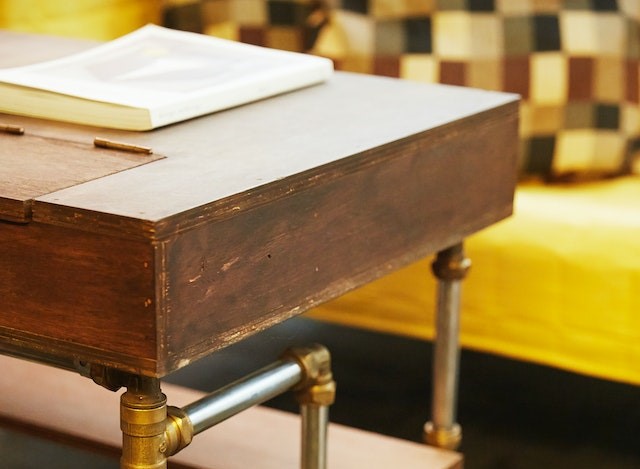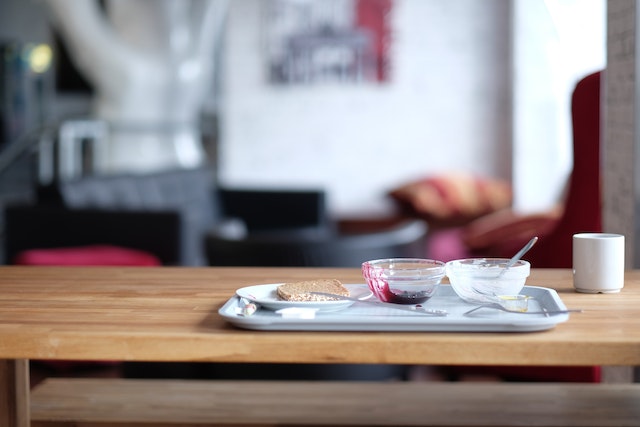How to Make a Perfect Rabbet-and-Dado Joint for Your Woodworking Project

Joinery is an essential aspect of woodworking, and the rabbet-and-dado joint is a versatile and strong connection that can be used in a wide variety of projects. Whether you’re building cabinets, bookcases, or other furniture, mastering this joint will allow you to create precise, professional-quality connections that are both strong and aesthetically pleasing.
In this article, we’ll take a deep dive into how to make a perfect rabbet-and-dado joint for your woodworking project. We’ll cover everything you need to know, from selecting the right tools and materials to measuring and cutting your joints with precision.
With step-by-step instructions and helpful tips, we’ll guide you through the process of creating this essential joint, and show you how to avoid common pitfalls and mistakes. So whether you’re a beginner or a seasoned woodworker, this guide will help you improve your skills and take your projects to the next level. Let’s get started!
Introduction to Rabbet-and-Dado Joints
Hey, woodworkers of the world! Ready to take your woodworking to a whole ‘nother level? Want to make those amazing creations that you see in the magazines? Yeah, you hear me! In this article, I’m gonna teach you about something called the rabbet-and-dado joint. Yeah, you heard me – the rabbet-and-dado joint!
A rabbet-and-dado joint’s one of the most versatile and dependable joints used by woodworkers to join two pieces of wood. Whether you’re making a table, a shelf, a drawer or whatever, the rabbet-and-dado joint is an essential element of your finished product. You see, this joint helps make strong, permanent connections between pieces, so you can make your projects look great and last.
And I’ sure you’re wondering – what exactly is a rabbet-and-dado joint? Well, a rabbet-and-dado joint is more than just one kind of joint – there’s several different types that have specific features that help you create a perfect fit between pieces of wood. Yeah, you heard me – it’s more than just one type of joint!
One type of rabbet-and-dado joint is the half-lap joint. This joint is made by routing half of each of the connecting pieces away so they fit together perfectly – like two puzzle pieces. Then, you can use glue and clamps to hold the joint together.
Another kind of rabbet-and-dado joint is the rabbet and groove joint – this joint has a precisely cut rabbet (or groove) on one piece and a dado (or notch) on the other piece. This joint is often used when you’re connecting two pieces at a right angle, like the edges of a shelf or tabletop.
The third type of rabbet-and-dado joint is the through-dovetail joint. This joint is primarily used for strength and is made by cutting a dovetail shape into the edge of one piece and a corresponding groove in the other. This joint is super strong, and can last a lifetime.
Now that you know what a rabbet-and-dado joint is, let’s get started. Who’s ready to get up in there and make some woodworking magic? Get that wood off the shelf, because it’s time to get to work. In the next section, we’ll talk about choosing the right tools and materials for making a perfect rabbet-and-dado joint. So stay tuned, because the next steps are gonna blow your mind!
What Is a Rabbet-and-Dado Joint?

We’ve all heard of furniture making and carpentry, but have you ever heard of a rabbet-and-dado joint? If not, you must have been living in a cave, because this type of joint is incredibly popular and can be found just about everywhere. But what is a rabbet-and-dado joint and why is it so important?
Well, first of all, let me tell you that a rabbet-and-dado joint is a type of woodworking joinery, which is essentially just a way to connect two pieces of wood. Typically, the joint is created by cutting a rabbet (pronounced ‘rabb-et’) into the edge of one piece of wood, and then cutting a dado (also known as a slot cut) into the adjoining piece of wood, which then forms a tongue-and-groove type connection.
The two pieces of wood fit together tightly and this allows for strength and stability, with the dado creating a recess for the rabbeted piece to fit snugly into. This type of joint is perfect for furniture making, cabinet construction, and other types of woodworking.
So why is the rabbet-and-dado joint so important? Well, first and foremost, it’s important because it creates a strong and safe joint for your carpentry or furniture making project. You don’t have to worry about pieces of wood slipping out of place or becoming loose, since the joint is a very precise and secure connection.
Furthermore, this type of joint is very precise and allows for much more accuracy and control over your woodworking projects. And if you’re looking to create more intricate pieces of furniture, the rabbet-and-dado joint can help you do that.
All in all, the rabbet-and-dado joint is a great way to join two pieces of wood together and create very strong, secure, and precise connections. It’s easy to see why the rabbet-and-dado joint is so popular in the world of carpentry and furniture making, and why it should be considered for your next woodworking project.
Different Types of Rabbet-and-Dado Joints
Ah, the rabbet-and-dado joint—a classic piece of joinery used to assemble beautiful and sturdy woodworking projects. The type of joint you use can affect the overall functionality and aesthetic of your project, so it’s important to know the different types of rabbets and dados. I’m here to tell you about what these joints are, and why you should pay attention to the type you choose for your projects!
What’s the difference between a rabbet and a dado? A rabbet is a step, or a groove, cut out of the edges of two boards that allows them to fit together more closely. A dado is a notch, or a groove, cut across two boards that also allows them to fit more closely. Put them together, and you’ve got yourself a rabbet-and-dado joint!
Now, let’s go through the different types of joints you can make. The first type is a blind rabbet-and-dado joint. This is usually the most common type, since it is straightforward, easy to make, and can be used in a variety of woodworking projects. It is the simplest of all rabbet-and-dado joints and only requires a single rabbet and a single dado for each piece of timber.
The second type of joint is a through rabbet-and-dado joint. This joint is slightly more complicated, but offers a stronger hold than a blind rabbet-and-dado joint. It requires two rabbets and two dados—one rabbet at each end, and one dado at the end and middle of each piece of timber.
The third type is a box joint. This is a complex type of joint that is particularly useful for making drawers, boxes, and other cabinetry projects. It involves cutting a series of notches, or half-laps, in each piece of wood to create an interlocking pattern.You will need a good sharp chisel and mallet to make this joint.
Finally, there is the lap joint. This is an advanced type of joint used to create furniture such as chairs and stools. This joint requires two pieces of wood with a rabbet cut into one and a half-lap cut into the other. The two pieces of wood are then placed together with the rabbet and the half-lap overlapping.
Now that you know the different types of rabbet-and-dado joints available, you’ll be ready to choose the right one for your next woodworking project. So don’t let the fear of failure stop you from taking on that next project. With the right joint and the right tools, you can make something amazing!
Getting Started

Ah, the classic rabbet-and-dado joint. A staple of the woodworking world and an essential joint for any project. But before you can start work on that joint, you need to make sure you’ve got the right tools, the right materials, and the right plan.
First things first, you need to make sure you’ve got the right tools and materials. You’ll need the right saw to cut the wood, like a miter saw, table saw, or even a jigsaw. You’ll need chisels and sandpaper, and maybe a router if you’re feeling fancy. You’ll also need the right kind of wood of course, whatever type fits your project.
Once you’ve got all your tools and materials, it’s time to start measuring, marking and planning out your joint. Now this is the part that may sound intimidating to the novice, but it’s really not that bad. You’ll just need to measure the rabbet and dado length and the width of the tenon. For me, I always write my measurements down, that way I can double check my work and keep track of my progress.
Finally, before you start putting your joint together, you may want to draw it out or run a test cut to make sure you’ve got everything the way you want it. If you draw it out, you can also add in all the measurements so you have a blueprint of sorts. That way, when you eventually choose your materials and cut, you can easily refer back to that blueprint and make sure you’re on the right track.
Now, with the measurements and all the tools ready, you’re ready for the next step: cutting the rabbet, dado, and tenon. Finally that joint is coming together!
Choosing the Right Tools and Materials

Woah there partner! You can’t jump right into making a perfect rabbet-and-dado joint without the right tools and materials, can you? Nah, you sure can’t! Best rule of thumb I heard from a smart ol’ timer woodworker, “Choose the right tools and materials for the job and you’ll have a lifetime of success” Now that sure does sound wise to me! Let’s get into what you’ll need for this project.
First, you’ll need a good quality router. Make sure the router has both rabbeting and dado bits, so you’ll be able to make the rabbet and dado joint properly. Also make sure you look at the guide bearings to make sure they’re in good shape.
Next, you’ll need quality wood glue and clamps to hold the joint together. Make sure you pick out a glue that is strong enough and won’t break down if it gets damp. Also, pay close attention to the clamp specifications and make sure they’re in good working order.
Lastly, you’ll need to have a sharp chisel and a saw to help with fine detailing. A chisel will be the best choice for tight spots and the saw will help to make any cuts that may have happened during the rabbeting and dadoing process.
Keep these tools and materials in mind and you’ll be well on your way to constructing the perfect rabbet-and-dado joint! Now, let’s get to the really good stuff – making the cuts!
Making the Cut: Measuring, Marking, and Planning Out the Joint
Ahhh, folks, you know it’s true: the key to good joinery is in the planning. What does that mean? Well, you could spend all the money in the world on all the right tools and all the best types of wood, but if you don’t know just exactly where you’re gonna make all those cuts, then, you know, you might as well just forget it. So, in this segment we take a look at measuring, marking, and planning out the joint.
First things first: lets talk about those measurements. In order for your rabbet-and-dado joint to fit together just right, all the measurements have to be exact. So, you’ll want to measure the depth of the dado, the height of the rabbet, the width and depth of the tongue, and so forth. Now, unless you want to spend a lot of time playing with your calculations, you can save yourself some trouble and just measure the piece of wood you want to join up and make all your measurements just a hair bigger than that. Measure twice, cut once, as they say!
Once you’ve got all your measurements, it’s time to mark the wood. Grab a pencil or a marking knife and make those marks, nice and crisp and clear. If you make your marks right, you’ll be able to reference them to make sure you’re making all your cuts in the right places.
Finally, you’ll want to plan out the joint. That means you’ll have to determine the best way to get to your ultimate goal: joining two pieces of wood together into a one solid structure. Take some time to study the boards, as well as your tools, and figure out which tool is best suited to each cut you’ll be making, and in what order you should make those cuts. Now, you may want to draw a diagram to help you envision all the steps; the more detailed the diagram, the easier it will be for you to carry out when making the cut.
So, there you have it folks: measuring, marking, and planning out the joint. Whenever you’re getting ready to make a rabbet-and-dado joint, always take the time to do all three of these steps, and you’ll be sure to end up with a perfect joint every time.
Step-By-Step Instructions
Creating the perfect rabbet-and-dado joint for your woodworking project? Ha! That’s an easy job for me! Just grab a ruler, a pencil, and your trusty router, and in no time flat, you’ll be ready to assemble the perfect joint. Let me walk you through the steps so you have a better idea of what’s involved.
Step 1: Routing the Rabbet
The first step in this process is to create the rabbet, which is the groove that’ll sit at the junction of two pieces of wood. To do this, use your router to make a shallow groove in the workpiece, using a straight bit set to the desired depth. It’s important to remember to use a system of clamps to secure the workpiece in place so that the router won’t jostle and ruin your cuts. Once you’ve made the initial groove, you’ll want to use a sharp chisel to clean up the rabbet’s walls.
Step 2: Cutting the Dado
Now we’re ready to cut the dado. This is a short, wide channel that’s cut along the edge of the workpiece to increase the surface area of the joint. To make sure your cuts are straight, use either a router or a table saw and set the bit or blade depending on the desired width of the dado. Now use a chisel to clean up any jagged edges that might have been left behind by the router or saw.
Step 3: Cutting the Tenon
The tenon is a clever design element that creates a snug fit between the rabbet and dado. To create the tenon, first use a miter saw to cut the end of the workpiece into a rectangular shape. You can then use either a router or a chisel to carve out the necessary parts of the tenon.
Step 4: Test Fitting and Sanding
Before putting everything together, now’s the time to test-fit all your pieces. They should fit together snugly like a jigsaw puzzle. Ensure that the rabbet, dado, and tenon all line up properly and that you haven’t left any uneven sections. If everything looks good, you can use some sandpaper to smooth out any rough spots.
There you have it: the perfect rabbet-and-dado joint ready to be assembled! Follow these guidelines and you’ll have a beautiful finished piece in no time. Now get out there and start building something amazing!”
Finishing Touches

If you’ve made it this far, congratulations! You’ve finished the hard part – now it’s time for the finishing touches.
If you’ve been following our instructions and using the right tools and materials, your rabbet-and-dado joint should be snug and ready for assembly. If you’re having a hard time getting the pieces to fit together, check your measurements one last time and make sure the cut is precise.
When you’re ready, it’s easy to assemble the joint. Take the tenon piece and slide it in the dado so that the protruding rabbet sits snuggly in the groove in the other board. Check it once more to make sure it fits securely.
Once the joint is assembled, you can finish it off with a sealant or other coating. If you plan on using it outside, you should probably consider buying some weatherproof sealant so it won’t get waterlogged or rot. A little bit of sandpaper can make all the difference, too – just make sure you only go in one direction to keep your work looking neat.
That’s it! You’re all done with your perfect rabbet-and-dado joint. Now all that’s left is to sit back and bask in your woodworking glory – you deserve it! Enjoy the fruits of your labor, and remember to take a break every once in a while to appreciate what you’ve made.






